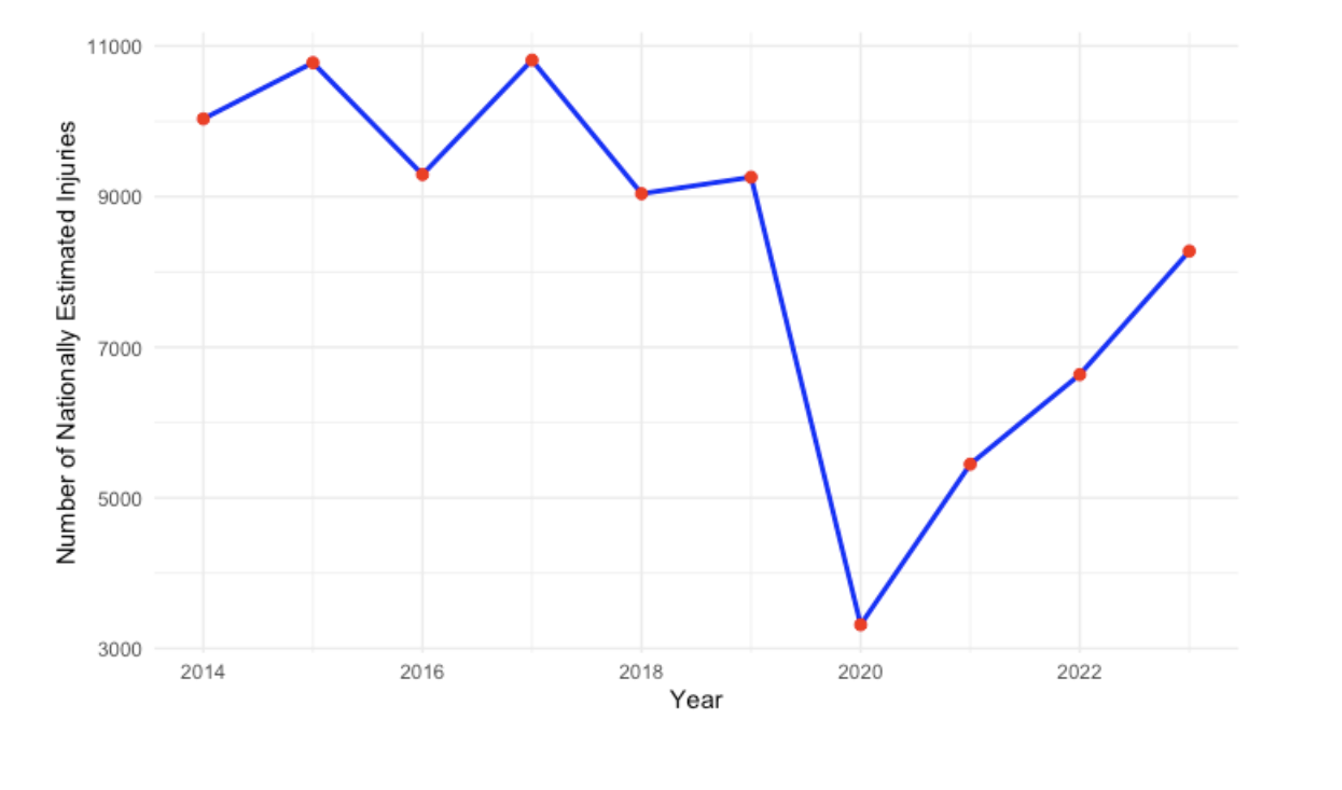Emergency Medicine 12
Session: Emergency Medicine 12
547 - The Current State of Cheerleading Head and Neck Injuries in the United States Pediatric Population: A 10-Year Review
Monday, April 28, 2025
7:00am - 9:15am HST
Publication Number: 547.6733
Uma Balachandran, Icahn School of Medicine at Mount Sinai, New york, NY, United States; Charu Jain, Icahn School of Medicine at Mount Sinai, New York, NY, United States; Camila Vicioso, Icahn School of Medicine at Mount Sinai, NY, NY, United States; Sheena Ranade, Icahn School of Medicine at Mount Sinai, New York, NY, United States

Uma Balachandran, BA (she/her/hers)
Medical Student
Icahn School of Medicine at Mount Sinai
New york, New York, United States
Presenting Author(s)
Background: Over the past several decades, cheerleading has grown exponentially in popularity amongst children in the United States. Simultaneously, with the introduction of more complex stunts and acrobatics, the sport has become increasingly dangerous. In October 2024, the American Academy of Pediatrics released new safety guidelines, specifically targeting concussions and other head injuries amongst pediatric cheerleaders.
Objective: We aimed to perform sex- and age-specific analyses of extreme sports injuries and to determine the impact of the pandemic on injury rates.
Design/Methods: Data was extracted from The National Electronic Injury Surveillance System (NEISS), a database representing approximately 100 US emergency departments (EDs). Each ED is assigned a sample weight, allowing for the calculation of national estimates (NEs) of injuries across the US. NEISS was queried for cheerleading head and neck injuries from January 1st, 2014-December 31, 2023 for 0–18-year-olds. Descriptive statistics and linear regressions were utilized.
Results: There were 2,493 cases (NE=82,887) of pediatric cheerleading injuries reported. Injuries were 50-times more likely in females than males (female NE=81,264; male NE=1,623). When compared to toddlerhood (0-3 years; NE=305), early childhood (4-8 years; NE=3,258), and middle childhood (9-12 years; NE=12,538), adolescents (13-18 years; NE=66,787) were the most injured group. The three most common diagnoses for head and neck injuries were concussions (25.9%), strain or sprain (12.6%), and contusions or abrasions (10.7%). 97.5% of patients presenting with cheerleading injuries were treated in the ED and released or examined in the ED and released. From 2014-2023, there was a significant decrease in head and neck injuries (R=0.649, P=0.043). Of note, the fewest injuries occurred during the height of the COVID-19 pandemic, with 3315 NE injuries in 2020 and 5446 NE injuries in 2021 (Figure 1).
Conclusion(s): The significant decrease in cheerleading head and neck injuries and high discharge rates directly from the ED are optimistic, suggesting efficacy of newer injury prevention policies. Future studies may capture the incidence of repeat head and neck injuries, the morbidity caused by these injuries, and the prevalence of people living with long-term consequences from these injuries. Our findings may be used to refine injury prevention and treatment protocols in this popular pediatric sport.
Figure 1. Nationally Estimated Cheerleading Head and Neck Injury Frequencies from 2013 to 2022


